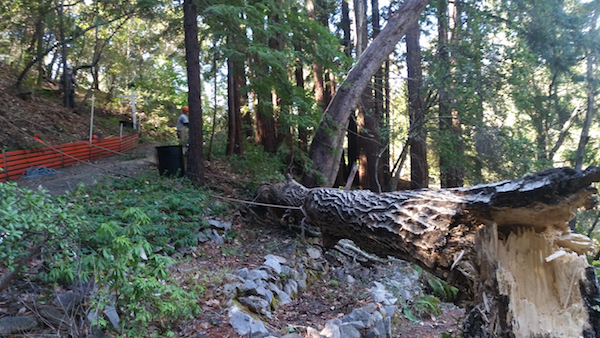
If you have a hazardous tree in your yard, there is a significant risk to the property and people around it. This is especially true if you live in a neighborhood where homes, cars and people are all very close to one another. If you are worried that your tree might pose a hazard, you want to call a professional arborist to evaluate the situation. Before you pick up the phone, though, take a look to see if there are any of these warning signs.
Canopy Size
If your tree has a canopy (or crown) that is too large, more force is placed on the rest of the tree. If this force is too great , you may see stem and branch splitting or cracking. Pruning to reduce weight at the ends of limbs can reduce the effect of wind pulling on the branches. Crown reduction can reduce the weight on supporting stems and laterals. Both of these treatments can minimize the risk of your tree become hazardous down the road.
Issues on the Ground
If you see sap running down your tree to the ground, mushrooms around the tree, nesting holes around the tree or on the trunk, borers or bee hives in the tree, these are signs that you might have problems below the soil or in the stem itself. All of these signs can indicate a potentially hazardous situation.
Dead Branches
If you have dead branches in a tree, they can fall off at a moment’s notice, hurting people or wrecking property. Limbs that come out of former topping cuts have a higher possibility of failure because of the flimsy attachment and possibility of decay within.
Flimsy structure
If your tree features two stems in a V rather than one predominant trunk, that is a sign that the tree has weakness in its attachments and is more likely to fail. Improper pruning practices, like lion tailing, flush cutting and topping also can create structure problems. If you see limb scars, that could be a sign of branch failure in the past and could be hazardous.
Root Structure Issues
When roots decay or sever under the ground, the result is often disastrous for the rest of the tree, as it has a much weaker support system. If your tree leans 30 degrees or more from the vertical and/or shows roots lifting up on the side opposite the lean, you need to schedule a consultation.
Decay in the Tree
If you see some wood rot or wood decay in the tree (cavities), the arborist will check to see if your tree has the necessary wood strength to support itself.
